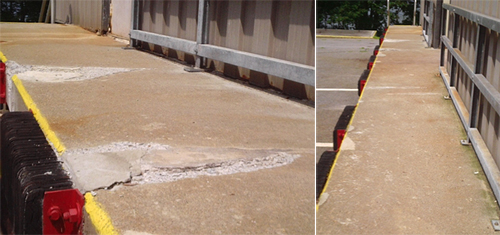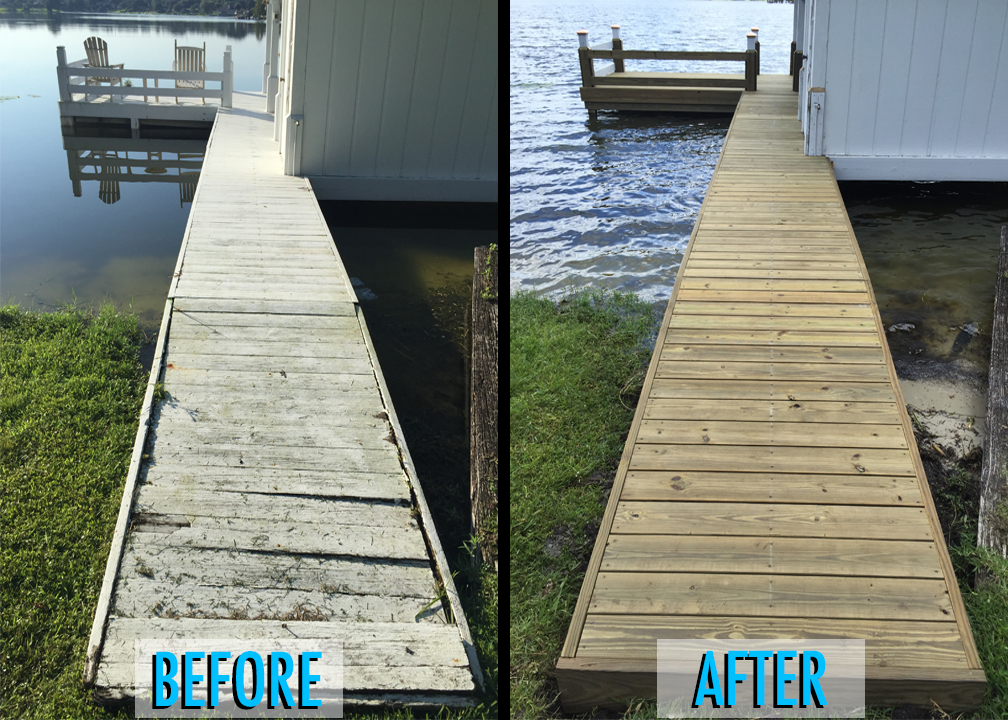Why Regular Maintenance Can Minimize Future Dock Repairs
Why Regular Maintenance Can Minimize Future Dock Repairs
Blog Article
Effective Dock Fixing Techniques: Ensuring Architectural Integrity
Guaranteeing the architectural integrity of anchors with efficient repair service methods is extremely important for the durability and security of aquatic centers. Subsequently, picking the appropriate fixing materials, such as composite products and corrosion-resistant alloys, is essential for durability.
Examining Dock Damage
Examining dock damages is a crucial primary step in making certain the structural integrity and security of any type of docking center. This preliminary analysis involves a thorough evaluation to determine both hidden and noticeable damages. Secret elements to check out include the dock's structure, pilings, decking, and hardware. Each element must be looked at for indicators of wear, rot, deterioration, or other kinds of destruction that might jeopardize the structural honesty.
Structural engineers or qualified assessors typically execute these assessments making use of specialized strategies and tools. For instance, undersea inspections could employ finder tools or remotely ran cars (ROVs) to find immersed damage. Over water, visual inspections are enhanced by making use of dampness meters and various other diagnostic tools to discover underlying concerns not instantly visible to the nude eye.

Picking Fixing Materials
Selecting the appropriate fixing materials is a crucial step in the dock restoration process, one that directly influences the longevity and efficiency of the fixed structure. Material choice should be driven by factors such as environmental problems, load-bearing needs, and compatibility with existing dock parts.
In enhancement to wood, composite products are increasingly prominent because of their resilience and low upkeep requirements. Composites, commonly made from a mix of plastic and timber fibers, use exceptional resistance to rot, pests, and UV damage. For steel anchors, picking corrosion-resistant alloys such as galvanized steel or marine-grade light weight aluminum is important to prevent corrosion and make sure architectural honesty in saline water problems.
Epoxy materials and marine-grade sealants are important for fixing cracks and sealing joints, providing a waterproof obstacle and improving the dock's overall toughness. By carefully selecting high-quality materials, dock repair work can achieve resilient results, thus securing versus future deterioration and ensuring safe, reputable use.
Structural Support Methods
Reliable structural support strategies are important in ensuring the security and long life of dock repair services. One basic technique entails making use of steel or composite support bars (rebar) within concrete structures. Rebar supplies added tensile strength, protecting against splits and dispersing lots more evenly. This technique is especially effective for anchors exposed to heavy lots or severe environmental conditions.
An additional vital method is the application of fiber-reinforced polymers (FRP) These products use high strength-to-weight proportions and excellent resistance to deterioration, making them optimal for reinforcing concrete or wooden anchors. FRP can be used in strips or sheets and bonded with epoxy resins to enhance structural stability.
Bracing and securing systems also play a vital role in structural reinforcement. Cross-bracing, utilizing steel or wood beam of lights, can counteract lateral pressures, decreasing persuading and movement. Anchoring systems, such as helical piers or driven heaps, supply a steady foundation by moving tons to much deeper, a lot more secure dirt layers.
Lastly, the assimilation of load-distribution plates can aid disperse weight extra equally throughout the dock's surface area, alleviating local anxiety factors. These strategies jointly make sure that docks continue to be durable and safe, qualified of holding up against the rigors of their functional environment.
Advanced Fixing Methods

An additional innovative technique includes underwater welding, which enables repair services to be conducted without the requirement to dewater the location. This technique is specifically helpful for dealing with structural concerns in submerged dock components, guaranteeing very little disturbance to procedures. Improved welding strategies, paired with robot systems, deliver accuracy and integrity, thereby expanding the lifespan of the dock.
Additionally, cathodic security systems are executed to stop deterioration in metallic dock structures. By utilizing sacrificial anodes or pleased current systems, these methods efficiently mitigate the electrochemical procedures that bring about product damage.
Finally, advanced tracking innovations, such as structural health and wellness tracking (SHM) systems, offer real-time data on the condition of dock structures. These systems make it possible for proactive maintenance and timely interventions, eventually guaranteeing the long-term structural stability of the dock.
Upkeep and Prevention
Maintenance and avoidance are essential concepts that underpin the longevity and safety of dock structures. Regular assessments are paramount, permitting early discovery of wear and tear, possible weaknesses, and ecological effects. A positive approach, including regular look for rust, rot, and structural see this page changes, minimizes expensive repair work and lengthens the dock's functional life.
Preventive procedures need to include applying protective finishings to metal elements to defend against rust and utilizing treated wood to withstand decay. Additionally, making sure appropriate water drainage and ventilation can avoid water buildup, which is a common root cause of structural degradation. Including top quality products and adhering helpful site to manufacturer guidelines during construction and repair stages additionally play vital functions in enhancing sturdiness.

Educating workers in dock upkeep finest techniques makes sure consistent application of preventative actions. Leveraging technological advances, such as drones for examinations and sensors for real-time tracking, can even more boost maintenance initiatives. By prioritizing upkeep and prevention, dock proprietors can make certain architectural honesty, operational security, and economical administration over the dock's life-span.
Final Thought
In conclusion, maintaining the architectural stability of marine facilities requires extensive dock repair work methods. Advanced repair work methods, coupled with regular upkeep methods, make certain the dock continues to be secure and functional under diverse ecological problems.
Making sure the architectural integrity of anchors with reliable repair service methods is vital for the longevity and safety and security of aquatic centers.Choosing the appropriate repair service materials is a crucial action in the dock repair procedure, one that straight affects the longevity and performance of the repaired structure.Reliable architectural support techniques are crucial in making certain learn the facts here now the stability and long life of dock repair work. By prioritizing upkeep and prevention, dock owners can make certain structural stability, functional safety, and cost-efficient administration over the dock's life-span.
In verdict, keeping the architectural honesty of aquatic facilities demands detailed dock fixing techniques.
Report this page